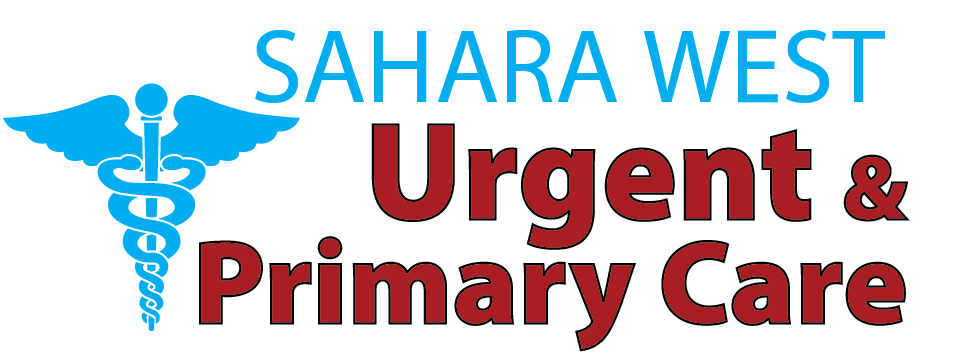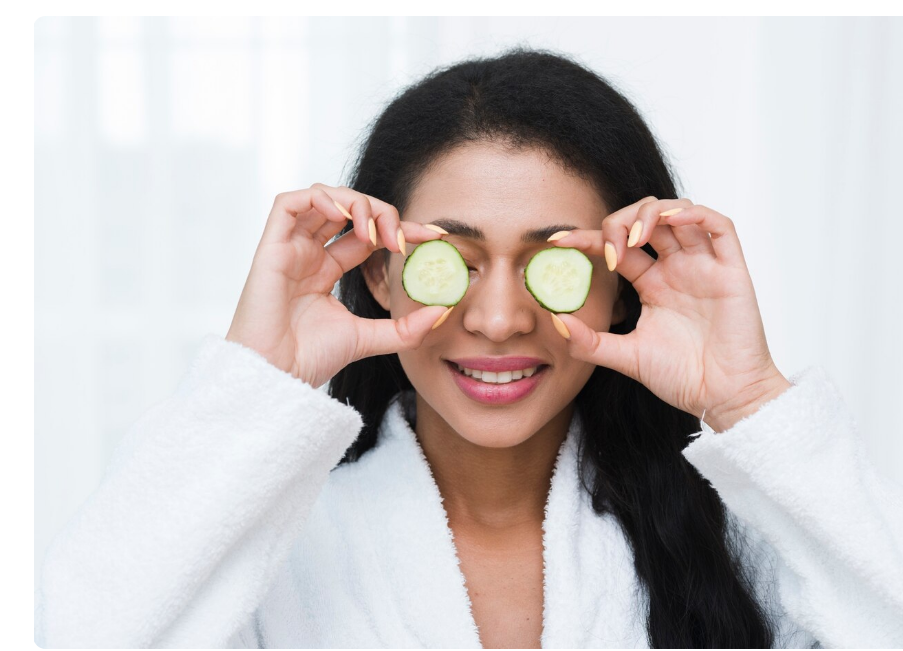Having clean eyes is not just important in terms of comfort; however, it is also important to avoid infection and keep your vision healthy. This is whether your eyes are itchy, burning, or you feel like refreshing them, it would be good to know how to wash them without any consequences. What most individuals simply do not understand is that there are potentially very destructive ways to do a certain task, which they employ by default.
This book will take you through safe, natural, and gentle methods of cleaning your eyes through medically recommended methods. It also provides information on how to tackle the regular problems, such as discharge, debris, and even chemical exposure, without threatening the fragile structure of your eyes.
Why Eye Cleaning Should Be a Regular Part of Your Hygiene Routine
Tears that appear naturally in your eyes protect them because they have enzymes and antibodies. Although this self-defense system can clear dust and debris, it does not suffice, especially in all instances. Pollen, pollution, allergens, and bacteria have the chance to accumulate around the eyes, particularly on eyelids and eyelashes, throughout the day. In the absence of cleaning, this accumulation might cause irritation, infections such as conjunctivitis, or blocked tear ducts.
These problems can be prevented by keeping a daily eye hygiene routine. Taking care of your eyes shouldn’t be very difficult, just as brushing your teeth or washing your face is an easy way of taking care of your body.
Best Practices for Daily Eye Cleansing
In order to make it safe to wash your eyes every day, start by ensuring that your hands are clean. This aids in the avoidance of the transfer of bacteria or irritants to your eyes. In case you are on contact lenses, you should first remove them before you cleanse.
Use filtered lukewarm water or alternatively sterile saline solution. Do not use plain tap water directly in your eyes since it might have dangerous microorganisms that cause infection. Put a clean piece of cotton pad or soft cloth in the solution and wipe around the eye area, starting at the inner corner and wiping towards the outer edge. This aids in sweeping away the debris without directing it to the tear duct.
Lashes and eyelid margins are not usually cared about, and they accumulate oils, bacteria, and residue. Clean your lash line. You can carefully wash your lash line with a clean cotton swab dipped in saline. When you have crust around the eyes in the morning, a warm compress will aid in softening it before wiping.
Most people should clean their eyes once in the morning and after coming home from being exposed to the outside environment.
How to Gently Remove Discharge or Eye Mucus
Eye discharge, sometimes called “sleep” or “eye crust,” is common in the mornings. However, if the discharge is excessive, sticky, or discolored, it may signal an underlying issue like an eye infection or allergic reaction.
Start by applying a warm, damp cloth to your closed eye. Let it rest for a few minutes to soften any hardened discharge. Avoid pulling or picking it off, which may irritate the skin around your eyes or spread infection.
Using a clean cotton pad, gently wipe from the inner to the outer corner of the eye. Use a separate pad for each eye to avoid cross-contamination. Always use sterile or boiled-and-cooled water to prevent introducing bacteria. If you wear contact lenses, avoid using them until the discharge has completely cleared.
Persistent or painful eye discharge should be evaluated by an eye specialist to rule out bacterial conjunctivitis or blocked tear ducts
How to Safely Clean Your Eyes After Exposure to Dirt or Debris
Small particles, dust, sand, and pollen can easily enter your eyes, especially on windy days or during outdoor activities. When this occurs, avoid the temptation to rub your eyes since this may cause scratches on the cornea or push the debris further into your eyes.
The first thing you can do to get rid of it is blink a lot, so that your natural tears wash out the irritating agent. You can also slowly open your top eyelid on top of your bottom eyelid. This can stimulate further tears and wash out the particle by itself.
In case blinking fails, wash your eye by using a sterile saline rinse or purified water. Cock your head up in such a way that the eye with the problem will look downwards, and then the solution would run out of the inner corner, to the outer. Keep flushing it until the definition is cleared.
In case you still have the feeling of discomfort, go to an eye care professional at once. Even the microscopic particles that are not visible can result in corneal abrasions unless they are removed properly.
What to Do If a Chemical Substance Gets Into Your Eye
Exposure to chemicals is a medical emergency and must be taken seriously at all times. It can also cause irritation or damage of the eyes using common household sprays, perfumes, or hair dye.
Check the label to get first-aid information upon instant occurrence of the product. Immediately after, you need to clean your hands properly to avoid contamination even more. Take off any contact lenses, though they should do so easily.
Wash the affected eye with a lot of warm or salty water or saline for at least 15 to 20 minutes. Put your face under a very slow-moving tap water or apply a clean vessel to pour several drops of water over the eye. Ensure easy movement of the water away from the undisturbed eye.
Rinse and loosely wrap the eye using a sterile cloth, and go seek emergency care. Bursts may be caused by mild contact with chemicals, and in case of no proper treatment, can lead to lasting body harm.
Eye Cleaning Tips for Contact Lens Users
When using contact lenses, more eye care is necessary to prevent eye infections such as keratitis or dry eye syndrome. Your eyes should always be cleaned with no lenses. Cleaning the Eyes With Lenses- By trying to clean the eyes with lenses, there is a possibility of getting the debris or bacteria caught between the lens and within the cornea.
Never wash your lenses using tap water or self-prepared combinations, and not with approved solutions as well. Also, make it a habit to clean the eyelids and lashes each day to take away the oil with which they can mix with the lenses.
Replace contacts as advised and replace the case. Well, although your lenses might be perfect, they come to an end, and delaying them may cause bacteria, which may inflame or affect the eye.
Hygiene before contacts are put in or taken out should not be disregarded because it is crucial to long-term eye health.
Mistakes People Commonly Make When Cleaning Their Eyes
The most common of them is the application of harsh chemical or non-sterile water close to the eyes. Tap water is not usually harmful, but it contains parasites such as Acanthamoeba that can provoke severe eye infections. The other common mistake is touching the eyes with irritants, whereby one ends up damaging the corneas.
A lot of individuals also do not wash their hands before washing their eyes, and thus transfer dirt or bacteria. Some might use the same cloth or cotton pad on the other eye, which increases the cross-infection.
Application of untested home remedies such as lemon juice, rose water, or even oils may end up hurting more than helping. Never trust those solutions that are not approved by ophthalmologists.
Natural Home Remedies for Eye Cleansing
A number of mild, homeopathic measures can help your eye hygiene, given proper use. When tired eyes are irritated, a cool chamomile tea compress works wonders. Absorb a clean cotton you in the cooled down tea and put it on your closed eyelids 10-15 min.
Unlike cleanser, cucumber slices will help in reducing puffiness and cool you down. Only when it is in its pure, preservative-free form, aloe vera gel can be used to reduce inflammation around the eye, but it cannot be used inside the eye at all.
To use as a natural rinse, saline sterile is the safest, most effective. Medically safe ingredients are always better than home-made solutions.
When and How Often You Should Clean Your Eyes
Most of the cleansings should be done in the morning (the time when the natural discharge is most probable to appear) and after coming outside of dusty, windy, or polluted areas. It is also necessary to clean the eyes of people using contact lenses before wearing and after taking them off.
In case you are having itchiness, grittiness, redness, or red appearance of your eyes, rinsing would give you relief instantly. Washing more than necessary with non-eye solutions can, however, dry out the eyes or cause them to become unbalanced regarding their natural tear levels. Dosage should be twice per day, but if recommended otherwise by a doctor.
Important Safety Tips for Eye Hygiene
Eye cleansing should always be done with clean hands, sterilized instruments, and items that are used just once. Do not insert any sharp or pointed instrument to take out an object from your eye. Do not wear makeup or cream around the eye region when you are working on sensitive or eye problems.
Interested parties should only use products containing instructions printed as safe for the eyes or ophthalmologist-tested. Should irritation take more than 24 hours or you have swelling, blurring of vision, or pain, stop any kind of home treatment, and consult a professional.
Conclusion
The most basic yet effective way to care for your eyes is by cleaning them properly. This simple habit can help prevent future discomfort and support long-term eye health. Whether it’s dust, discharge, or daily buildup, gentle cleansing with the right materials makes a significant difference. Make it a part of your daily routine, follow safety guidelines, and your eyes will thank you with clear, comfortable vision for years to come.
Looking to maintain healthier eyes? Start incorporating safe and non-toxic eye-cleaning practices today. If you’re unsure how to begin, always consult with a specialist—especially if you’re seeking professional eye cleansing in Las Vegas. To schedule your appointment with the highest standard of care, visit Sahara West Urgent Care on our website.
Frequently Asked Questions
How can I clean my eyes naturally at home?
Use sterile saline or purified water with a clean cotton pad to wipe gently from the inner to the outer corner.
Do eyes clean themselves?
Yes, tears help flush minor debris, but regular cleansing is still recommended to remove buildup and avoid infections.
What’s the safest way to get dirt out of my eye?
Blink repeatedly to stimulate tears. If that fails, flush with sterile saline. Avoid rubbing the eye at all costs.
Is it okay to rinse my eyes with tap water?
No. Tap water can carry bacteria or parasites that harm the eyes. Use only sterile or purified water.
Can eye cleansing prevent infections?
Yes. Regular cleaning removes bacteria, allergens, and irritants that may lead to infections like conjunctivitis.





